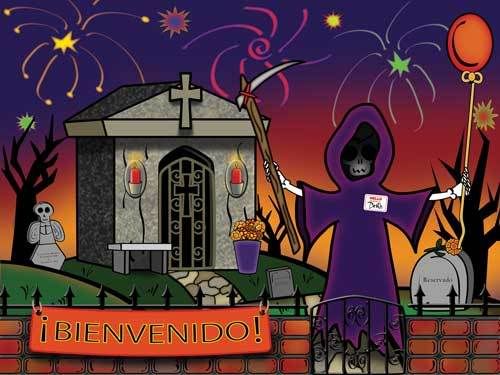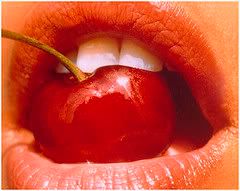 While death is a topic largely avoided in the U.S., the remembrance of deceased ancestors and loved ones is traditional among diverse cultures around the globe, often marked by lighting candles or lamps and laying out offerings of food and drink. Such celebrations can be traced back as far as the glory days of ancient Egypt when departed souls were honored during the great festival of Osiris.
While death is a topic largely avoided in the U.S., the remembrance of deceased ancestors and loved ones is traditional among diverse cultures around the globe, often marked by lighting candles or lamps and laying out offerings of food and drink. Such celebrations can be traced back as far as the glory days of ancient Egypt when departed souls were honored during the great festival of Osiris.In Mexico the Day of the Dead is a holiday that tends to be a subject of fascination for visitors from abroad. With its rare mix of pre-Hispanic, Spanish culture, and Roman Catholic rituals, it is a perfect illustration of what has come to define the country and its people.
November 1st, All Saints Day, and November 2nd, All Souls Day are marked throughout Mexico by a plethora of intriguing customs that vary widely according to the ethnic roots of each region. Common to all, however, are colorful adornments and lively reunions at family burial plots, the preparation of special foods, offerings laid out for the departed on commemorative altars and religious rites that are likely to include noisy fireworks.
In most localities November 1st is set aside for remembrance of deceased infants and children, often referred to as angelitos (little angels). Those who have died as adults are honored November 2nd.
The spirits of the dead are expected to pay a holiday visit home and should be provided with an enticing repast and adequate sustenance for the journey. Frequently a wash basin and clean hand towel are provided so that visiting souls can freshen up before the feast. The offering may also include a pack of cigarettes for the after-dinner enjoyment of former smokers, or a selection of toys and extra sweets for deceased children.
 At the family burial plot in the local cemetery, relatives spruce up each gravesite. In rural villages this may entail cutting down weeds that have sprouted up during the rainy season, as well as giving tombs a fresh coat of paint after making any needed structural repairs. The graves are then decorated according to local custom. The tomb may be simply adorned by a cross formed of marigold petals or elaborately embellished with colorful coronas (wreaths) and fresh or artificial floral arrangements. In many areas children's graves are festooned with brightly colored paper streamers or other festive adornments.
At the family burial plot in the local cemetery, relatives spruce up each gravesite. In rural villages this may entail cutting down weeds that have sprouted up during the rainy season, as well as giving tombs a fresh coat of paint after making any needed structural repairs. The graves are then decorated according to local custom. The tomb may be simply adorned by a cross formed of marigold petals or elaborately embellished with colorful coronas (wreaths) and fresh or artificial floral arrangements. In many areas children's graves are festooned with brightly colored paper streamers or other festive adornments.Death held a significant place in the pantheons and rituals of Mexico's ancient civilizations. Among the Aztecs, for example, it was considered a blessing to die in childbirth, battle or human sacrifice, for these assured the victim a desirable destination in the afterlife.
Living alongside death means that Mexicans have learned to accept it within their lives. Death is apparent in everyday life.
Death is a celebration.














5 Comments:
Even though half my relatives are Mexican, we never celebrated Day of the Dead until high school. Loved sampling mole, though. :)
Thanks again for enlightening us with your informative posts.
As death should be: a celebration of the life lived and still felt.
Glad you brought this up. The day of the dead is also celebrated by the Italians as well. Maybe it's because of the roman catholic link
I've always liked the Day of the Dead celebration, but the Aztecs and some of the others around that time had a nasty habit of ripping hearts from chests while people were still alive.
But I like the "enticing repast and adequate sustenance" as we all should have that for almost any journey."
Tumuli: I never celebrated it either, I find it fascinating though. And hey, any excuse for some Mole, right?
SamuraiFrog: Exactly, to never forget.
Molecular Turtle: Yeah, you know that the Catholics have got their big toe into everything! (Are you Italian?)
2 Dollar Productions: It's all about the journey.
(I suddenly am in the mood for some Indiana Jones ...)
Post a Comment
<< Home